Unraveling the Rainbow: Queer and Indigenous Intersections in the Philippines
Unraveling the Rainbow: Queer and Indigenous Intersections in the Philippines
Pride Month paints the world with a vibrant palette of rainbow hues, each one a symbol of the diverse identities within the LGBTQ+ community. Today, we're going to journey through a unique crossroad of colors - the intersection of queer identities and indigenous heritage in the Philippines.
In the heart of the Philippines, a culturally-diverse archipelago, over 100 indigenous cultural communities thrive. Among them walk members of the LGBTQ+ community, bridging the complexities of dual identities.

Often, these individuals experience a double-edged sword of discrimination - marginalized within their cultural groups due to their queer identity, and further subjected to prejudice in broader Filipino society because of their indigenous heritage. This intersectionality, a concept coined by Kimberlé Crenshaw, reveals a unique set of struggles often overlooked in isolated discussions about queer or indigenous issues.
Strict enforcement of traditional gender roles in some indigenous communities can lead to discrimination against those who dare to break these molds, irrespective of their sexual orientation. Furthermore, some indigenous spiritual beliefs may clash with queer identities, leading to exclusion or even violence.
Beyond the borders of these indigenous cultural groups, homophobia and transphobia still heavily taint the fabric of broader Filipino society. This can hinder queer indigenous individuals from accessing basic services like healthcare and education, or lead to discrimination in employment and housing.
Yet, amidst these challenges, many have found resilience. They've carved out safe havens, built supportive networks, and fought for their rights and visibility. Their stories are a testament to the power of intersectionality and the enduring spirit of humanity.
Tracing the Queer Thread in Philippine History
The queer narrative in the Philippines stretches back to pre-colonial times. From the babaylan, gender-fluid spiritual leaders in indigenous communities, queer identities have always woven into the cultural tapestry.
However, with the Spanish conquest in the 16th century, a binary understanding of gender was imposed, and homosexuality was branded a sin. This era marked the beginning of persecution and forced concealment of queer identities.
In the post-colonial period, societal attitudes towards queer identities began to evolve, albeit slowly. Yet, homophobia and transphobia persist, especially in rural areas, with queer indigenous individuals facing discrimination both within and outside their communities.
Advocating for Equality: The SOGIE Bill
Recently, the call for queer rights in the Philippines has grown louder. In 2017, the House of Representatives passed the SOGIE Equality Bill, aimed at prohibiting discrimination based on sexual orientation and gender identity. However, the bill is currently stalled in the Senate.
The passage of the SOGIE Equality Bill would be a significant stride towards equality for the queer community in the Philippines. It would affirm that queer individuals are not second-class citizens, but deserving of the same rights and protections as all.
As we celebrate Pride Month, let's remember and honor the unique struggles of queer indigenous Filipinos. Let's stand in solidarity, fighting for their rights and visibility, while working towards a more inclusive and equitable world for everyone, regardless of sexual orientation, gender identity, or indigenous heritage.
Here's to a Happy Pride Month!
Painting:
Carlos V. Francisco | Progress of Medicine in the Philippines | Panel I of IV | 1953 | Oil on canvas
Photo by Bengy Toda III for National Museum of the Philippines
Sources:
https://www.thesuflyer.com/post/lgbtqia-history-month-queer-magic-and-pre-colonial-philippines

Leave a comment
Please note, comments must be approved before they are published